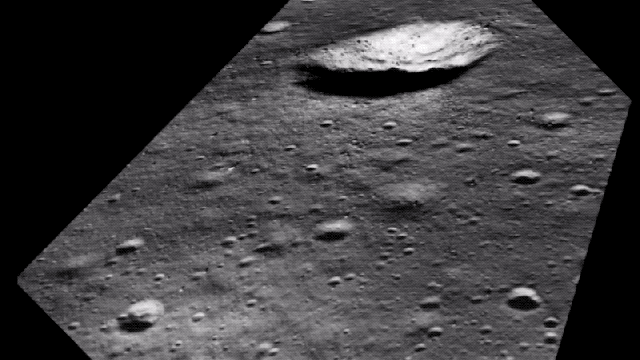Choppy video taken by a camera next to Buzz Aldrin’s window is the only visual record we have of the first Moon landing. Using archival data and new high-res images, a team from NASA has recreated the Apollo 11 landing, showing Neil Armstrong’s perspective for the very first time.
The visual record of the Apollo 11 landing is good but not great. The camera mounted near Buzz Aldrin’s right-side window captured the historic scene in 16mm time-lapse, shooting the landing at a not-so-impressive 6 frames per second (24 fps is typically required to convey the impression of uninterrupted motion). What’s more, the limited view of the Lunar Module camera meant no visual record of Neil Armstrong’s perspective of the landing was recorded.
To amend this tragic limitation of history, NASA’s Lunar Reconnaissance Orbiter Camera (LROC) team has created a computer-generated visual reconstruction of the three minutes leading up to the landing (above), showing the view as Armstrong would’ve experienced it. And unlike the original 16mm source, the restoration shows the landing in crisp, high-resolution video. Well, at least until we get to a few feet above the lunar surface, after which time the resolution gets a bit wonky.
All critical facets of the landing were used to produce the simulation, including latitude, longitude, orientation, velocity, and altitude. The LROC team also referenced voice recordings made during the landing. This archival data was then referenced against high-resolution images captured by the LROC Narrow Angle Camera (LROC NAC).
A NASA release describes the dramatic scene:
As the video begins, Armstrong could see the aim point was on the rocky northeastern flank of West crater… causing him to take manual control and fly horizontally, searching for a safe landing spot. At the time, only Armstrong saw the hazard; he was too busy flying the LM to discuss the situation with mission control.
No kidding! Seeing a 189.89m-wide crater a mere 91.44m below the Lunar Module must’ve been a truly harrowing experience. NASA continues:
After flying over the hazards presented by the bouldery flank of West crater, Armstrong spotted a safe spot about 500 metres down track where he carefully descended to the surface. Just before landing, the LM flew over what would later be called Little West crater (40 metres diameter). Armstrong would visit and photograph this crater during his extra-vehicular activity (EVA). Of course, during the landing, Armstrong was able to lean forward and back and turn his head to gain a view that was better than the simple, fixed viewpoint presented here.
To showcase the accuracy of the simulation, the LROC team also produced a side-by-side view of the original 16mm film juxtaposed alongside a simulated view:
Looking at the two scenes together, the achievement of the LROC team is indeed impressive. And with the voice recordings matched to the video, it’s as if we’re with Armstrong and Aldrin as they’re swooping above the dusty lunar landscape.
Not to be greedy, but how cool would it be to see a panoramic, wide-angled view of the landing? C’mon NASA, make it happen!
